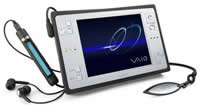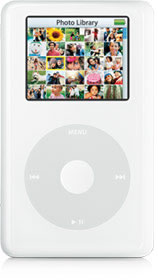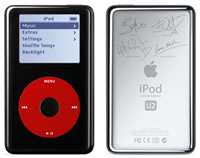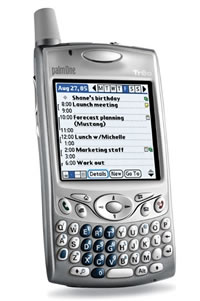A chip set focused on providing home users with the ability to capture, manipulate and distribute digital audio and video content around a home network wirelessly is running through the rumour mill. It has been long anticipated.
Intel recently dropped the launch of the 4GHz version of their P4 processor. Many commentators had been wondering what people were going to use all of that processing power for after chip speeds have spiralled upwards in the last few years. In discussion that we’ve had with senior Intel people, it has been clear that they don’t really know what to do with all of that power.
Their new approach is to develop ranges of “platforms” – Centrino, the chipset designed for laptops being a good example. It has low-power use and WiFi built in.
Reuters are reporting on project name “East Fork” will focus the power of the chips on providing and distributing and manipulating Audio and Video (AV) content around peoples home. Playing back AV content doesn’t take a huge amount of processing power, but capturing video and real-time encoding it, to distributed around the household does. The problem Intel faces with that is the media companies don’t want their content digitised, but they are addressing this with content protecting schemes.
The Korean DigiTimes has information that the complete setup will be called “DH EF PCs”. Not too catchy, and we assume an internal name only, that stands for Digital Home East Fork PC.
 The latest addition to Sony’s VAIO range of personal computers is really, really different. The VAIO VGN-U750P (around US$2,000) is a palmtop computer that also goes under the more firendly name of the Vaio U and weighs considerably less than the average laptop (167x108x26mm, 550g), yet boasts a fully fledged Intel-based environment running Windows XP Professional SP2 as opposed to the specialised platforms powering other handhelds, such as Palm OS, Windows Mobile or even Windows XP Tablet PC Edition.
The latest addition to Sony’s VAIO range of personal computers is really, really different. The VAIO VGN-U750P (around US$2,000) is a palmtop computer that also goes under the more firendly name of the Vaio U and weighs considerably less than the average laptop (167x108x26mm, 550g), yet boasts a fully fledged Intel-based environment running Windows XP Professional SP2 as opposed to the specialised platforms powering other handhelds, such as Palm OS, Windows Mobile or even Windows XP Tablet PC Edition. Designed for law enforcement, perimeter security and long-range video links,
Designed for law enforcement, perimeter security and long-range video links,  Apple’s much anticipated and predicted new iPod – iPod Photo, launched late yesterday, has moved into the multimedia realm, allowing users to view and share photos as well as the normal music play back. The new iPod Photo can hold up to 25,000 pictures and can be connected to a television to play video slide shows. The 40-gigabyte version is priced at $499 (~£272) and the 60-gigabyte model is priced at $599 (~£326).
Apple’s much anticipated and predicted new iPod – iPod Photo, launched late yesterday, has moved into the multimedia realm, allowing users to view and share photos as well as the normal music play back. The new iPod Photo can hold up to 25,000 pictures and can be connected to a television to play video slide shows. The 40-gigabyte version is priced at $499 (~£272) and the 60-gigabyte model is priced at $599 (~£326). The U2 iPod is expected to be available mid-November for a suggested retail price of £249 (~$456) through the Apple Store, Apple’s retail stores and Apple Authorised Resellers. IPod TV adverts showing U2 were shown on UK television this evening.
The U2 iPod is expected to be available mid-November for a suggested retail price of £249 (~$456) through the Apple Store, Apple’s retail stores and Apple Authorised Resellers. IPod TV adverts showing U2 were shown on UK television this evening. A finer, mellow blend of phone and PDA, PalmOne launched the Treo 650 in the US yesterday. There are changes on the outside and changes on the inside – some cosmetic, some ergonomic, and some fundamentally technical. I’d be happy to ditch my current phone if I won this in a raffle!
A finer, mellow blend of phone and PDA, PalmOne launched the Treo 650 in the US yesterday. There are changes on the outside and changes on the inside – some cosmetic, some ergonomic, and some fundamentally technical. I’d be happy to ditch my current phone if I won this in a raffle!